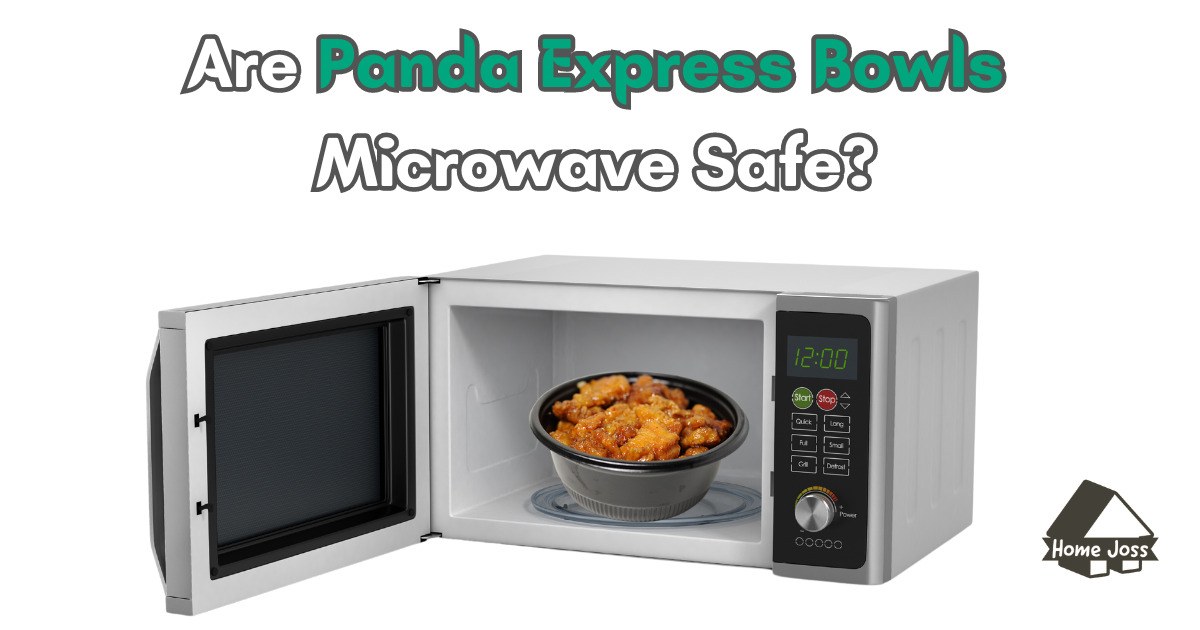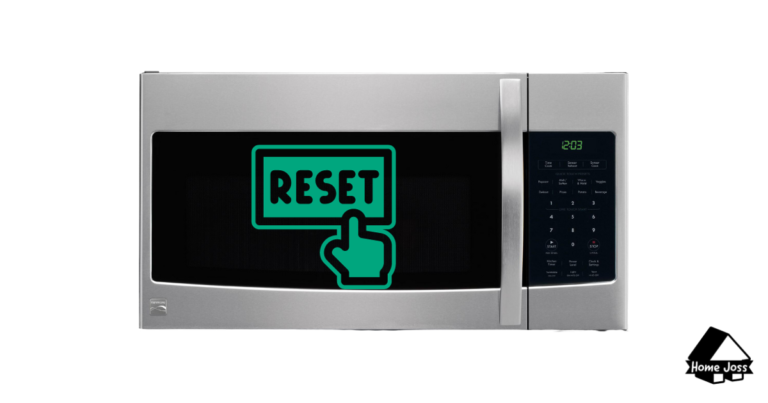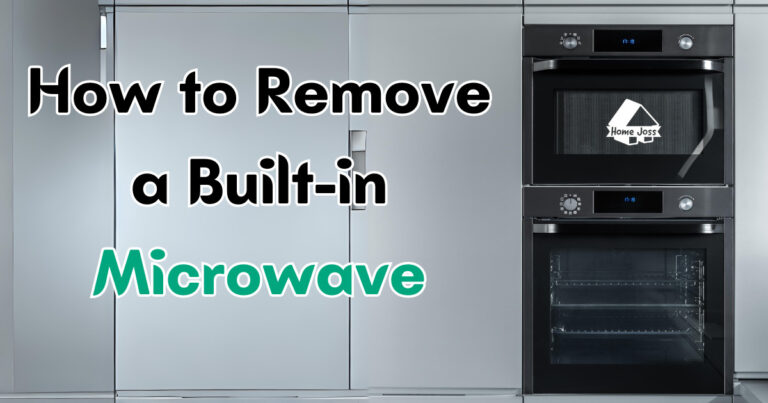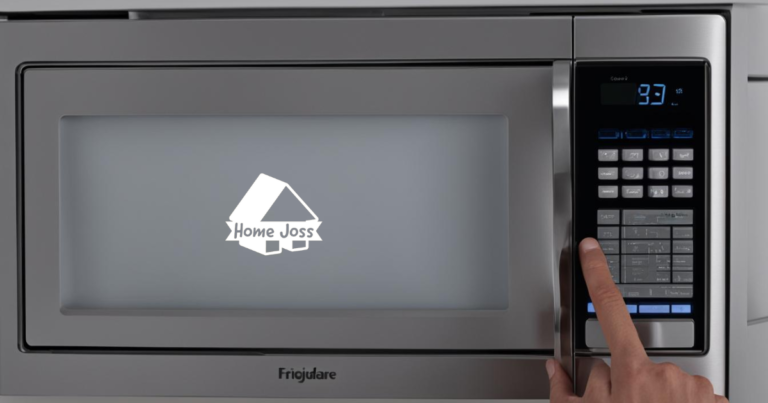As a fan of Panda Express, you may find yourself wondering if the iconic Panda bowls are safe to use in the microwave. After all, being able to conveniently reheat your favorite Asian cuisine is a big plus.
In this article, we will explore the microwave safety of Panda Express bowls and provide you with essential tips to ensure a safe and enjoyable dining experience.
Are Panda Express Bowls Microwave Safe

Yes, Panda Express bowls are microwave-safe. They are designed from materials like polypropylene plastic, melamine, and porcelain that can withstand the heat from the microwave without releasing harmful chemicals or melting.
These bowls are specifically crafted for reheating food, ensuring that you can warm up your favorite Panda Express meals conveniently and safely. However, they are not suitable for oven use, as the materials can warp or deform under intense heat. Always ensure to follow the safety tips and guidelines for a safe and enjoyable reheating experience.
You may also need to know Can You Microwave Aluminum Trays?
Identifying Microwave-Safe Bowls
When it comes to determining whether a bowl is microwave-safe, there are a few key indicators to look out for. Many microwave-safe containers have symbols or markings at the bottom that indicate their suitability for microwave use.
For example, a symbol with the number 5 or the letters “PP” signifies that the bowl is made from polypropylene, which is microwave-safe. Similarly, the symbol #1 or the letters “CPET” indicate that the container is safe for microwave use.
In addition to these symbols, you can also look for wavy lines at the bottom of the bowl. These lines indicate that the container is suitable for reheating food in the microwave. It’s worth noting that the shape and design of the lines may vary, but they generally have a microwave or dish icon at the top.
You may also need to know Can You Microwave a Thermos?
Types of Bowls Safe for the Microwave
While Panda Express bowls are microwave-safe, it’s helpful to know which other types of bowls can be safely used for reheating food. Here are some common materials that are generally safe for microwave use:
Glass and Ceramics
Glass and ceramic bowls are typically microwave-safe, making them a popular choice for reheating food. However, it’s important to ensure that the glass container is not made of thin glass and does not have any cracks.
Thin glass, such as wine glasses, can crack under high temperatures. When using ceramic bowls, check for any metal linings or handles that may not be suitable for microwave use.
Tupperware and Plastic Containers
Most Tupperware containers are safe for storing and warming food in the microwave. However, it’s important to note that single-use plastic containers, such as yogurt or ice cream containers, may not be suitable for microwave use.
Additionally, old or cracked plastic containers should be avoided, as they may release harmful chemicals when heated.
Ziploc Bags
Ziploc storage bags are microwave-safe and can be used to heat and defrost food. It’s important to follow the instructions on the label when using different brands of storage bags to ensure they are microwave-safe.
When using Ziploc bags, it’s recommended to warm the food in short intervals and check the condition of the bag and food frequently. If the bag sticks to the food, it’s best to avoid microwaving it.
Potential Risks of Using Non-Microwave Safe Bowls
Using bowls that are not microwave-safe can pose several risks to both your health and your kitchen appliances. Here are some potential risks to be aware of:
Risk of Fire
Metal and paper containers have a high likelihood of catching fire when used in the microwave. Metal reflects the microwave radiation waves, leading to sparks and potential fires.
Paper containers treated with certain chemicals can combust when exposed to high temperatures. It’s important to avoid using these materials in the microwave to prevent accidents and damage to your kitchen appliances.
Health Risks From Plastic
Heating food in non-microwave-safe plastic containers can cause harmful chemicals to leach into the food when the containers become too hot. The level of chemical seepage can vary depending on the type of plastic and the chemicals used.
To ensure food safety, it’s generally recommended to avoid using any plastic container in the microwave unless it is FDA-approved.
Damage to Dishes
Non-microwave-safe containers, such as those made of certain plastics, may melt, break, or crack when exposed to high temperatures in the microwave. Melted plastic can not only ruin the inside of the microwave but also pose a risk of burns if it comes into contact with the skin. Broken glass in food can also be dangerous and cause injuries.
Damage to Food
Certain materials, such as aluminum foil and some types of plastic, are not suitable for use in the microwave. Microwaving food wrapped in aluminum foil can lead to uneven heating and defrosting, resulting in cold spots in the food.
This can create an environment for dangerous bacteria to thrive, potentially causing food poisoning and related illnesses.
Tips for Using Panda Express Bowls in the Microwave
To ensure the safe and effective use of Panda Express bowls in the microwave, here are some tips to keep in mind:
- Do not microwave an empty bowl: Only microwave bowls with food or liquid inside, as empty bowls can overheat and warp.
- Use lower power settings: Opt for 50-70% power when reheating food to prevent overheating and potential damage to the bowl.
- Don’t exceed heating times: Heat food in 1-2 minute intervals, checking frequently. Avoid exceeding 5 minutes of total heating time.
- Allow resting time: After microwaving, let the heated bowl sit for 1-2 minutes before handling, as it will be very hot immediately after reheating.
- Check for damages: Before reusing the bowl, inspect it for any cracks, warping, or other damages. If a bowl is damaged, it should be discarded to ensure food safety.
By following these precautions, you can safely reheat your favorite Panda Express meals in their microwave-safe bowls.
Ideal Foods to Reheat in Panda Express Bowls
Panda Express bowls are perfect for reheating a variety of Asian-inspired dishes. Here are some examples of foods that work well in Panda bowls:
- Entrees: Kung pao chicken, orange chicken, chow mein, and other Panda Express main dishes can be conveniently reheated in the microwave. Cover the bowl with a lid or a paper towel to prevent splattering.
- Rice: Fried rice, steamed rice, and rice bowls can be reheated in Panda bowls. Add a small amount of water to prevent the rice from drying out.
- Soups: Egg drop soup, hot and sour soup, and ramen soups can be reheated in Panda bowls. Partially cover the bowl to retain moisture.
- Sides: Steamed or sautéed vegetables, potstickers, and crab rangoon can be easily reheated in Panda bowls. Cover the bowl with a damp paper towel to prevent drying.
- Sauces: Sweet and sour sauce, teriyaki sauce, and chili sauce can be reheated in Panda bowls. Stir the sauce periodically during the reheating process.
These foods can be reheated from refrigerated or room temperature states, providing a convenient way to enjoy your favorite Panda Express dishes at any time.
Microwave Safety Tips
In addition to using microwave-safe bowls, following these general microwave safety tips can help ensure safe and effective reheating of your food:
- Use microwave-safe containers: When reheating food in the microwave, use containers that are specifically labeled as microwave-safe. Avoid using containers made of metal or plastic not designated for microwave use.
- Arrange food appropriately: Arrange the food in a ring at the edge of the container, leaving the center empty. This promotes even heating and helps prevent cold spots.
- Cover food when necessary: To retain moisture and prevent splattering, cover the food with a microwave-safe lid or a paper towel. This also helps ensure more even heating.
- Allow standing time: After reheating, allow the food to stand in the microwave for a short period. This allows the heat to distribute evenly throughout the food and reduces the risk of burns.
- Stir and check the temperature: Stir the reheated food and check the temperature before consuming. This helps ensure that there are no cold spots and that the food is heated thoroughly.
- Rotate dishes: If reheating multiple dishes, periodically rotate them in the microwave to promote uniform heating. Microwave hot spots can lead to uneven cooking.
By following these microwave safety tips, you can enjoy delicious reheated meals without compromising your health or the integrity of your kitchen appliances.
FAQ about Are Panda Express Bowls Microwave Safe
To provide further clarity on the microwave safety of Panda Express bowls, here are some frequently asked questions:
Are black plastic Panda bowls microwave-safe?
Yes, the black plastic Panda bowls provided in Panda Express restaurants are made from BPA-free polypropylene plastic, which is microwave-safe.
Can Panda bowls be used in the oven?
No, Panda bowls should only be used for microwave reheating. The materials used in these bowls are not suitable for high oven temperatures and may warp or deform.
Do the patterns on Panda Bowls affect their microwave safety?
No, the panda image patterns on the bowls are microwave-safe and do not impact their ability to be reheated. The printed designs contain no metallic compounds.
How long can food be microwaved in a Panda bowl?
It’s recommended to heat food in Panda bowls in 1-2 minute intervals, not exceeding a total of 5 minutes. Extended microwave times can potentially damage the bowls. Always check the food’s temperature before consuming.
Can hot liquids like soup or tea be microwaved in Panda bowls?
Yes, soups and other hot liquids can be safely reheated in Panda bowls using proper microwave precautions. Exercise caution when handling the hot bowl after reheating.
Can Panda bowls be used for cooking in the microwave?
No, Panda bowls are specifically designed for reheating food and not for cooking. They should not be used for cooking raw or uncooked food in the microwave.
Can Panda Bowls be reused?
Yes, Panda bowls can be reused as long as they are in good condition without any cracks, warping, or other damages. It’s important to inspect the bowls before reuse to ensure food safety.
What are the benefits of using Panda bowls for reheating food?
Panda bowls offer convenience and efficiency when it comes to reheating food. They eliminate the need for transferring food to a different container, saving time and effort. Plus, their microwave-safe design ensures a safe reheating process.
Are Panda bowls dishwasher safe?
Yes, Panda bowls are dishwasher safe, making cleaning up after reheating a breeze. Place them in the dishwasher along with your other dishwasher-safe dishes.
Can I use Panda bowls for cold food storage?
Yes, Panda bowls can be used for storing cold food in the refrigerator. Their durable construction allows them to withstand refrigeration without any issues.
Remember, always prioritize safety when using any type of dishware in the microwave. By following the guidelines provided and using microwave-safe containers, you can enjoy the convenience of reheating your favorite Panda Express meals without any concerns.
In conclusion, Panda Express bowls are indeed microwave-safe, allowing you to conveniently reheat your favorite Asian cuisine without the need to transfer to a different container.
These bowls are made from materials that can withstand microwave heating and are designed specifically for reheating food. By following the provided tips and guidelines, you can ensure a safe and enjoyable dining experience with Panda Express bowls in your microwave. So go ahead and enjoy your reheated Panda Express meals with confidence!






